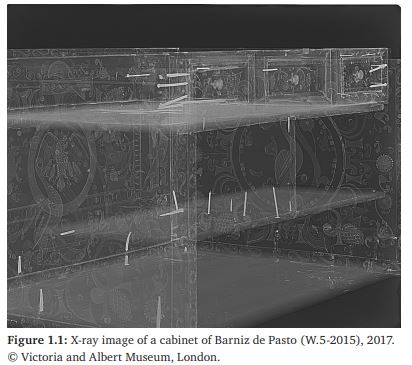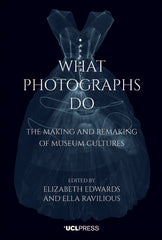International Museum Day: What are photographs ‘doing’ in museums?
What are photographs ‘doing’ in museums? Like the x-ray permeating objects to reveal internal structures (figure 1.1), photographs permeate museum practices at all levels – display, collections management, conservation, retail, publicity and exhibition publications, for instance. Photographs inhabit museums in huge numbers. However, these photographs are rarely part of formally accessioned collections: despite their epistemic and historical presence, they are active yet invisible, there but not there.

Museums are shaped and defined through photographic practices that constitute and reproduce values, hierarchies and knowledge systems, generally with little cognisance of the power of these practices. Such images and their uses are, as Crane has described them, ‘a lowly sort of thing’ that ‘appears or hides in many guises’. Consequently, this book is about the work of the photographs that are not part of a museum’s formal collection, although they might once have been, or might become so. It addresses a range of institutional conditions which exceeds ‘the collection’ as it is officially recognised.
Whether one is considering ‘the collections’ or the material accruals around them, museums are centres of calculation in Bruno Latour’s sense, where accumulated objects, networks, proximities and values become knowledge through an institution’s procedures and devices. Photographs are the unconsidered heart of these processes, as they accumulate and circulate knowledge, even more so in an age when digitally available photographs of objects are at the front line of ‘accessibility’. While it has been argued that museums have, for some time, been post-photographic in their increasing dependence on networked, digital and multimedia realms, it remains that beneath these developments of the last three decades or so, photographs as imaging practices remain central. Since the nineteenth century, photographs have widened the reach of what museums can do and how they can function. They form both the background and the spine of museum practice, from record keeping to questions of decolonisation, from archival accrual to retail source, to the degree that it has been impossible to think about museum function and praxis without encountering photographs.
This mass of photographs can be said to form an ‘ecosystem’: a finely balanced network of dependencies and connective tissue which create and underpin values, hierarchies and knowledge systems and which are present in the museum in dispersed multiple, folded and overlapping layers. The various sites of photographic activity, from the studio through collections management to exhibitions, are nodes in the ecosystem which have their own micro-cultures that mutually inform and conflict. They form massive and shifting bodies of photographic utility and practice which translate objects into certain kinds of things and displays into certain kinds of spaces (figure 1.2). Photographs shape the texture and fabric of both internal professional procedures of museums and their external public face.

They are, in sum, a key organising principle of museums and markers of its ’rhetoric of value’.
An excerpt from What Photographs Do, edited by Elizabeth Edwards and Ella Ravilious.

